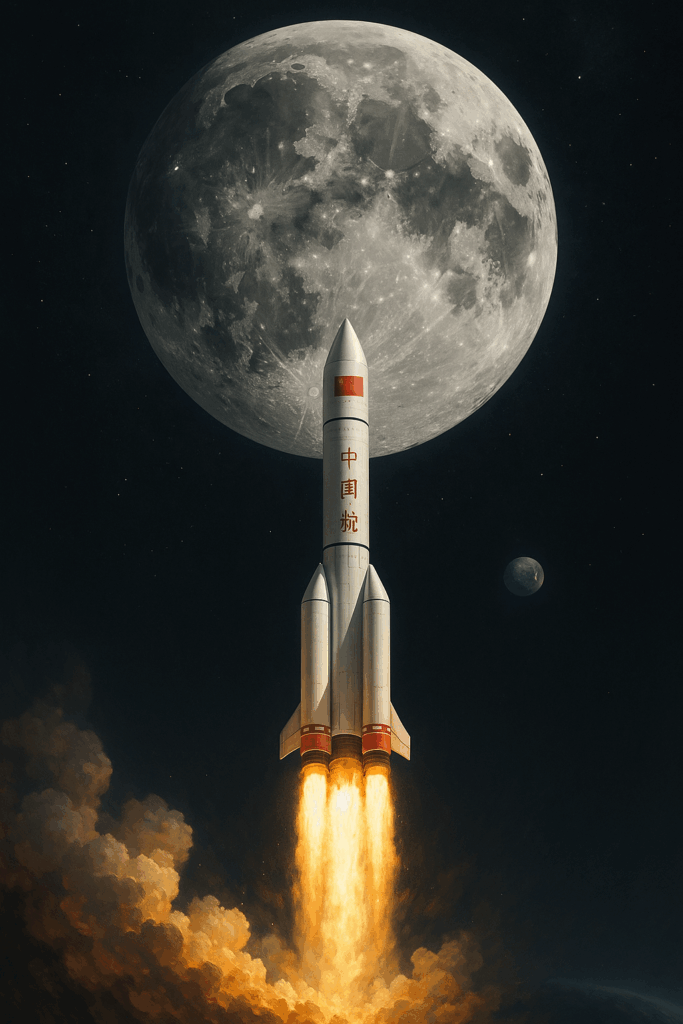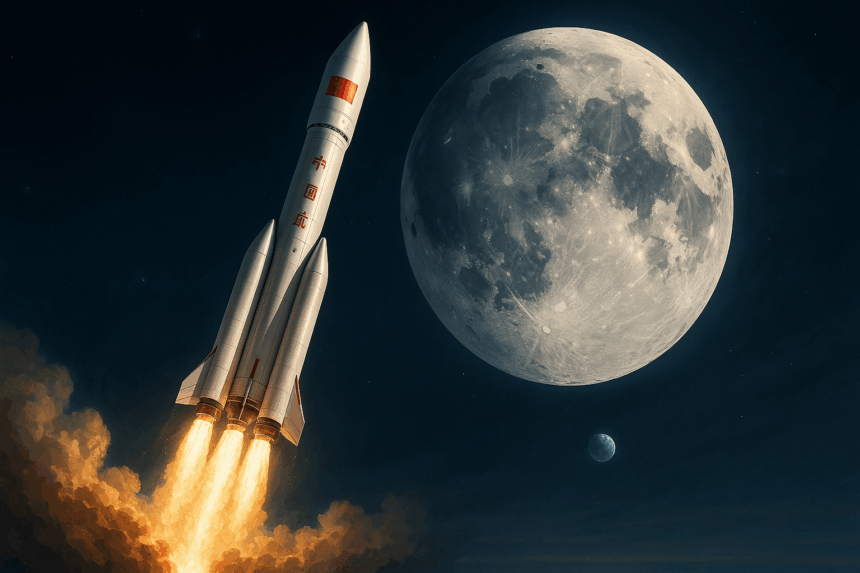China is making rapid progress toward a crewed lunar landing before 2030. Through the steady development of rockets, spacecraft, and landers, Beijing is positioning itself as the frontrunner in a new space race. Analysts warn this could reshape global perceptions of technology, power, and leadership in space.
What’s Happening & Why This Matters
Milestones in China’s Program
In early August, the China Manned Space Agency (CMSA) tested its 26-ton Lanyue lunar lander outside Beijing. Engineers used giant tethers to mimic lunar gravity while the craft fired its engines to land on a simulated cratered surface. CMSA called the test “a key step” toward placing astronauts on the Moon before 2030.

Soon after, the Long March-10 rocket completed a successful 30-second static fire test at the Wenchang Spacecraft Launch Site. This heavy-lift rocket can carry about 70 metric tons to low-Earth orbit. Combined with earlier tests of the Mengzhou spacecraft’s launch escape system, China now shows progress in every element of its lunar program: the rocket, the crew vehicle, and the lander.
Dean Cheng, a space policy expert and fellow at the George Washington University Space Policy Institute, told Ars Technica that these efforts follow China’s “crawl-walk-run” approach. He explained: “The test of the Lanyue lander, successful or not, is an important part of that process. Alongside the LM-10 rocket, this indicates that the Chinese lunar program is pushing ahead.”
How This Compares to the U.S.
The United States retains its Artemis Program, backed by partners such as NASA, SpaceX, and Blue Origin. Unlike Apollo, Artemis seeks long-term sustainability through technologies like in-space refuelling and reusable systems. However, setbacks—particularly with SpaceX’s Starship — mean the U.S. is years away from executing these missions.
That delay creates a high chance that China lands astronauts first. Cheng warns this could be a geopolitical blow: “It means the end of American exceptionalism. The optics of the passing of the American age would be evident.”

Why the Stakes Are Higher Than a Flag-Planting
China’s plans extend beyond planting a flag. Officials signal interest in landing near the lunar South Pole to establish a sustained presence. Their plans include building positioning, navigation, and timing (PNT) networks, lunar communication systems, and potentially long-term facilities.
If successful, Beijing could set technical standards and shape cis-lunar space traffic management. Such control would give China influence not only in exploration but also in commercial and military space operations.
Global Perceptions and Policy Concerns
The U.S. still holds more experience and industrial capacity. Yet, Cheng points out America lacks “programmatic stability.” Goals have shifted between presidential administrations, creating uncertainty for NASA and private partners. China, by contrast, remains steady, systematic, and decades-long in its planning.
Cheng added that to compete, Washington must commit to a clear path — whether the Moon or Mars — and back it with funding, congressional support, and industry incentives. Without that, Beijing’s progress could redefine space leadership for this century.
TF Summary: What’s Next
China’s lunar program is moving quickly and with purpose. With the Lanyue lander and Long March-10 rocket showing progress, Beijing may return humans to the Moon before NASA. A Chinese moon landing would not only be a technical milestone but also a political statement about global leadership in space.
The U.S. has the tools, talent, and industry to respond, but it needs stability and direction. If Washington cannot deliver a sustained commitment, China could shape the next phase of space exploration — on its terms.
— Text-to-Speech (TTS) provided by gspeech


